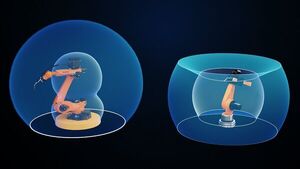2022-04-07 - Nº 362
Editorial
Esta é a Newsletter Nº 362 que se apresenta com o mesmo formato que as anteriores. Se gostar da Newsletter partilhe-a!
Todas as Newsletters encontram-se indexadas no link.
Esta Newsletter tem os seguintes tópicos:
Faz hoje anos que nascia, em 1866, o matemático sueco Ivar Fredholm. Ele ficou conhecido pelas equações integrais de Fredholm com aplicações em física matemática e ciência actuarial. O seu primeiro trabalho (1890) foi sobre uma classe especial de funções inspirada pela equação de calor. A sua dissertação de doutoramento de 1898 envolveu um estudo de equações diferenciais parciais motivadas por um problema de equilíbrio na elasticidade. Fredhlom também teve uma carreira na ciência actuarial e a partir de 1902 estudou várias questões nesta área, incluindo uma fórmula elegante que propôs para determinar o valor de rendição de uma apólice de seguro de vida. Construiu uma máquina para resolver equações diferenciais. David Hilbert estendeu uma das equações integrais de Fredholm, descobrindo espaços de Hilbert sobre os quais seria construída a teoria quântica.
A 7 de Abril de 1795, o grama, em que se baseia o quilograma, foi decretado para ser igual ao "peso absoluto de um volume de água pura igual a um cubo de um centésimo de metro, e à temperatura do gelo fundente". Embora a definição do quilograma especificasse água a 0 °C - um ponto de temperatura altamente estável - foi substituída pela temperatura a que a água atinge a densidade máxima. Esta temperatura, cerca de 4 °C, não era conhecida com precisão, mas uma das vantagens da nova definição era que o valor Celsius preciso da temperatura não era realmente importante. A conclusão final foi que um decímetro cúbico de água à sua densidade máxima era igual a 99,92072% da massa do quilograma provisório.
Em 1927, a primeira exibição pública de uma transmissão televisiva de longa distância foi vista por um grupo de repórteres e dignitários de jornais no auditório da AT&T Bell Telephone Laboratories, Nova Iorque. A pesquisa na AT&T foi liderada por Herbert Ives, que introduziu o sistema à audiência, seguido de um discurso transmitido pelo então Secretário do Comércio, Herbert Hoover de Washington, D.C. Tanto a imagem ao vivo como a voz foram transmitidas por fio, através de linhas telefónicas. Hoover disse: "Hoje temos, de certa forma, a transmissão da visão pela primeira vez na história do mundo", e também, "O génio humano destruiu agora o impedimento da distância num novo respeito, e de uma forma até agora desconhecida". A realização foi anunciada com grande aclamação pela imprensa.
Em 1964, a IBM lançou o System/360, uma família de seis computadores compatíveis entre si e 40 periféricos que poderiam funcionar em conjunto. Muitos consideram-no o maior jogo de negócios de todos os tempos, mas o System/360 ajudou a transformar o governo, a ciência e a paisagem comercial. Introduziu uma série de padrões industriais no mercado, incluindo o padrão mundial de facto do byte de 8 bits. O investimento de 5 mil milhões de dólares da IBM compensou, e dentro de dois anos as encomendas para o System/360 atingiram 1.000 por mês. Os clientes podiam escolher entre pequeno e grande, baixo a alto desempenho, (quase) todos com o mesmo conjunto de comandos, permitindo aos clientes começar com uma versão de baixo custo da família, e actualizar mais tarde.
Em 2001, a NASA lançou a nave espacial Mars Odyssey 2001 sobre um foguetão Delta II. Imagens impressionantes foram enviadas de volta pelas câmaras de televisão do foguetão durante a sua ascensão em chamas. Odyssey viajaria 286 milhões de milhas antes de entrar em órbita em torno do planeta vermelho em 24 de Outubro de 2001. A sua principal missão era procurar água sob a forma de gelo sob a superfície marciana e criar um mapa térmico do planeta. A partir de uma altitude de cerca de 250 milhas, a nave espacial deveria procurar vestígios de hidrogénio, o que poderia indicar a existência de água.
Na Newsletter desta semana apresentamos diversas noticias, artigos científicos, projetos de maker e alguns vídeos interessantes.
 João Alves ([email protected])
João Alves ([email protected])
O conteúdo da Newsletter encontra-se sob a licença  Creative Commons Attribution-NonCommercial-ShareAlike 4.0 International License.
Creative Commons Attribution-NonCommercial-ShareAlike 4.0 International License.
Novidades da Semana
Outras Notícias
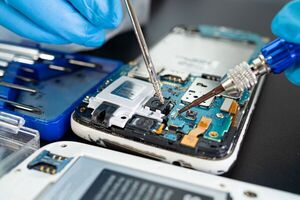
European Right to Repair resolution headed for vote
"European lawmakers are voting in plenary on a Right to Repair resolution today amid calls for the initiative to go even further. The draft motion for resolution [PDF] cited a survey that found 79 percent of EU citizens thought that manufacturers should make repairs easier, with 77 percent saying a repair would be preferable to replacement, and called for access to parts, repair information, and standardization among devices. To that end, the motion emphasizes labels to indicate repairability and expected lifetime for products, access to parts and repair facilities, an extension to liability for defective goods beyond two years, and calls on the European Commission to "always take into account the highest possible level of consumer protection and consumer welfare." The European Commission is no stranger to the "Right to Repair" movement, having kicked off reforms in 2020 aimed at getting manufacturers to improve their designs with a view to improving longevity and recycling. Apple was required to publish repairability scores for its products in France last year following the introduction of regulations requiring a repairability index on washing machines, smartphones, laptops, televisions, and electric lawnmowers. The motion being voted on today appears to be a step right direction." [...]
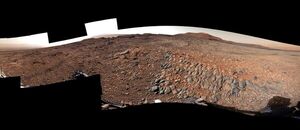
NASA’s Curiosity Mars Rover Reroutes Away From ‘Gator-Back’ Rocks
"To avoid patches of knife-edged rocks, the mission has taken an alternative path up Mount Sharp. NASA’s Curiosity Mars rover spent most of March climbing the “Greenheugh Pediment” – a gentle slope capped by rubbly sandstone. The rover briefly summited this feature’s north face two years ago; now on the pediment’s southern side, Curiosity has navigated back onto the pediment to explore it more fully. But on March 18, the mission team saw an unexpected terrain change ahead and realized they would have to turn around: The path before Curiosity was carpeted with more wind-sharpened rocks, or ventifacts, than they have ever seen in the rover’s nearly 10 years on the Red Planet. Ventifacts chewed up Curiosity’s wheels earlier in the mission. Since then, rover engineers have found ways to slow wheel wear, including a traction control algorithm, to reduce how frequently they need to assess the wheels." [...]

NVIDIA Orin Leaps Ahead in Edge AI, Boosting Leadership in MLPerf Tests
"The just-released NVIDIA Jetson AGX Orin raised the bar for AI at the edge, adding to our overall top rankings in the latest industry inference benchmarks. In its debut in the industry MLPerf benchmarks, NVIDIA Orin, a low-power system-on-chip based on the NVIDIA Ampere architecture, set new records in AI inference, raising the bar in per-accelerator performance at the edge. Overall, NVIDIA with its partners continued to show the highest performance and broadest ecosystem for running all machine-learning workloads and scenarios in this fifth round of the industry metric for production AI. In edge AI, a pre-production version of our NVIDIA Orin led in five of six performance tests. It ran up to 5x faster than our previous generation Jetson AGX Xavier, while delivering an average of 2x better energy efficiency. NVIDIA Orin is available today in the NVIDIA Jetson AGX Orin developer kit for robotics and autonomous systems." [...]

Announcing IBM z16: Real-time AI for Transaction Processing at Scale and Industry's First Quantum-Safe System
"IBM (NYSE: IBM) today unveiled IBM® z16™, IBM's next-generation system with an integrated on-chip AI accelerator—delivering latency-optimized inferencing. This innovation is designed to enable clients to analyze real-time transactions, at scale -- for mission-critical workloads such as credit card, healthcare and financial transactions. Building on IBM's history of security leadership, IBM z16 also is specifically designed to help protect against near-future threats that might be used to crack today's encryption technologies. IBM innovations, including the IBM z16, have formed the technology backbone of the global economy for decades. Today's modern IBM mainframe is central to hybrid cloud environments, valued by two thirds of the Fortune 100, 45 of the world's top 50 banks, 8 of the top 10 insurers, 7 of the top 10 global retailers and 8 out of the top 10 telcos as a highly secured platform for running their most mission critical workloads. For example, according to a recent IBM commissioned study by Celent "Operationalizing Fraud Prevention on IBM Z," IBM zSystems run 70% of global transactions, on a value basis.2 "IBM is the gold standard for highly secured transaction processing." [...]

Intel Launches New Intel Blockscale Technology for Energy-Efficient Blockchain Hashing
"Intel today announced details for its new Intel® Blockscale™ ASIC. Building on years of Intel research and development (R&D), this application-specific integrated circuit (ASIC) will provide customers with energy-efficient hashing for proof-of-work consensus networks. "Momentum around blockchain continues to build. It is the enabler of decentralized and distributed computing, making way for innovative business models. To power this new era of computing, Intel is delivering solutions that can offer an optimal balance of hashing throughput and energy efficiency regardless of a customer’s operating environment. Intel’s decades of R&D in cryptography, hashing techniques and ultra-low voltage circuits make it possible for blockchain applications to scale their computing power without compromising on sustainability.” –Balaji Kanigicherla, Intel vice president and general manager of Custom Compute in the Accelerated Computing Systems and Graphics Group Why It Matters: Compute requirement for blockchains utilizing proof-of-work consensus mechanisms is growing at a rapid rate due to their resiliency and ability to scale without sacrificing decentralization." [...]
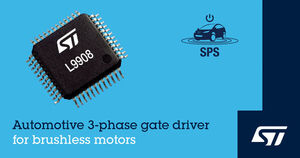
STMicroelectronics’ automotive gate driver boosts motor-control flexibility
"STMicroelectronics’ L9908 integrated automotive three-phase gate driver unit (GDU) operates in 12V, 24V, or 48V systems and has flexible input and output channels to fulfil numerous applications in conventional and hybrid/electric vehicles. Dedicated source connections to the high-side and low-side FETs (field-effect transistors) of each half bridge let users configure the output channels independently to drive various types of loads. In addition, six separate PWM (pulse-width modulation) input pins allow independent management of the pre-driver stages for different motor-control strategies. High accuracy is assured, with three differential current monitors for ground-referenced measurements and three channels for real-time phase-voltage monitoring. There is also a rich set of diagnostic and protection features. By combining high integration, flexibility, and accuracy, the L9908 simplifies design, saves space, and enhances control of low-voltage fluid pumps, pumps and blowers in ventilation and cooling systems, and electronic seat controls." [...]
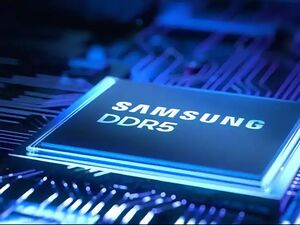
Here To Upgrade the World: Introducing Samsung’s Game-Changing DDR5 Solution
"The age of DDR5 has arrived. From 5G and artificial intelligence (AI) to metaverse and augmented reality (AR), high-performance computing is pushing the limits of server environments to process massive amounts of data at extremely high speeds. Understanding that tech giants the world over are set to add droves of servers to their data centers, Samsung Electronics has developed its DDR5 memory solutions to play a key role in empowering future-oriented industries to perform at their peak. Future-First Memory Solutions for Data-Driven Innovation With the development of their DDR5 solution, Samsung, a company known for changing the landscape of the global dynamic random access memory (DRAM) market, has introduced yet another generational shift in the IT industry. Furthermore, following the release earlier this year of CPUs that support DDR5, tremendous change is expected in the computing landscape, too, with growth expected to encompass gaming and mainstream PCs as well. Compared to its predecessor which hit the market in 2013, DDR4, DDR5 DRAM boasts twice the speed and four times the capacity, at 4800Mpbs and 512GB respectively.1 This next-generation high-performance memory allows networks to handle the soaring amounts of data generated by cloud computing, AI and autonomous driving systems." [...]

STMicroelectronics’ AMOLED power-management IC boosts viewing experience and battery runtime in portable devices
"STMicroelectronics’ new fully integrated Power-Management IC (PMIC) for AMOLED displays combines a low quiescent current and enhanced flexibility to extend the battery runtime of portable devices. With an input-voltage range from 2.9V to 4.8V, the STMP30 PMIC contains three integrated DC-DC converters to provide all the power rails needed for AMOLED displays in smartphones and other portable devices. The 550mA VOUT1 boost converter has an adjustable output voltage, unlike other devices that fix VOUT1 at 4.6V. The voltage can be set between 4.6V and 5.0V, in 100mV increments, to optimize the display brightness for lowest power consumption and best visibility under any conditions. The 5.0V maximum setting allows use of High-Brightness Mode (HBM) for best viewing in bright outdoor lighting. The remaining two outputs are provided by a 550mA single-phase buck-boost inverting converter, programmable from -0.8V to -6.6V, and a 5.5V to 7.9V 150mA boost converter." [...]

An update to Raspberry Pi OS Bullseye
"One of the things which we spend a lot of time thinking about here at Raspberry Pi is security. Cyber-attacks and hacking are, sadly, constantly on the increase, and Raspberry Pi computers are as much a target as any other, just because there are so many of them out there nowadays! Over the years, we have gradually ramped up the security of Raspberry Pi OS; not in response to particular threats, but more as a general precaution. There is always a balance to be struck, however, as security improvements usually carry a cost in terms of usability, and we have tried to keep the system as convenient to use as possible, while having an acceptable level of security. Up until now, all installs of Raspberry Pi OS have had a default user called “pi”. This isn’t that much of a weakness – just knowing a valid user name doesn’t really help much if someone wants to hack into your system; they would also need to know your password, and you’d need to have enabled some form of remote access in the first place." [...]
Ciência e Tecnologia

An alternative low-cost technique to produce metal powders for 3D printing
"Additive manufacturing (AM), also known as metal 3D printing, creates objects by addition of material, layer by layer. A major source material for AM is metal powder, which is predominantly produced using a technique called atomisation, in which a molten metal stream is broken up into fine droplets using air or water jets. However, despite its widespread use, atomisation returns poor yield, is expensive, and is inflexible in the types of materials it can handle. A team of researchers at the Indian Institute of Science (IISc) led by Koushik Viswanathan, Assistant Professor at the Department of Mechanical Engineering, has identified an alternative technique to produce metal powders that side-steps these problems. This has interesting implications for AM processes in general, including areas such as the manufacture of biomedical implants. In the metal grinding industry, the material removed – called swarf – is often discarded as a waste product." [...]
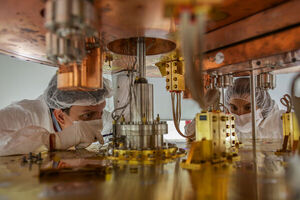
CUORE team places new limits on the bizarre behavior of neutrinos
"Physicists are closing in on the true nature of the neutrino — and might be closer to answering a fundamental question about our own existence In a Laboratory under a mountain, physicists are using crystals far colder than frozen air to study ghostly particles, hoping to learn secrets from the beginning of the universe. Researchers at the Cryogenic Underground Observatory for Rare Events (CUORE) announced this week that they had placed some of the most stringent limits yet on the strange possibility that the neutrino is its own antiparticle. Neutrinos are deeply unusual particles, so ethereal and so ubiquitous that they regularly pass through our bodies without us noticing. CUORE has spent the last three years patiently waiting to see evidence of a distinctive nuclear decay process, only possible if neutrinos and antineutrinos are the same particle. CUORE’s new data shows that this decay doesn’t happen for trillions of trillions of years, if it happens at all. CUORE’s limits on the behavior of these tiny phantoms are a crucial part of the search for the next breakthrough in particle and nuclear physics – and the search for our own origins." [...]
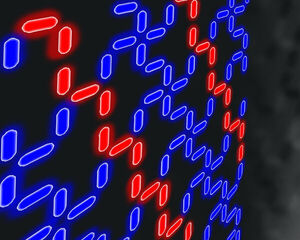
'Frustrated' nanomagnets order themselves through disorder
"Interactions between alternating layers of exotic, 2D material create 'entropy-driven order' in a structured system of magnets at equilibrium Extremely small arrays of magnets with strange and unusual properties can order themselves by increasing entropy, or the tendency of physical systems to disorder, a behavior that appears to contradict standard thermodynamics — but doesn’t. “Paradoxically, the system orders because it wants to be more disordered,” said Cristiano Nisoli, a physicist at Los Alamos and coauthor of a paper about the research in Nature Physics. “Our research demonstrates entropy-driven order in a structured system of magnets at equilibrium.” The system examined in this work, known as tetris spin ice, was studied as part of a long-standing collaboration between Nisoli and Peter Schiffer at Yale University, with theoretical analysis and simulations led at Los Alamos and experimental work led at Yale. The research team includes scientists from a number of universities and academic institutions. Nanomagnet arrays, like tetris spin ice, show promise as circuits of logic gates in neuromorphic computing, a leading-edge computing architecture that closely mimics how the brain works. They also have possible applications in a number of high-frequency devices using “magnonics” that exploit the dynamics of magnetism on the nanoscale." [...]

Blending a renewable fuel
"Clean and sustainable fuels could be derived by combining ammonia with complementary combustion-modifying additives. A low-carbon sustainable fuel mixture, derived primarily from renewably generated ammonia, could power next-generation internal combustion engines (ICEs). Blending ammonia with a small amount of dimethyl ether (DME) gives a liquid fuel with low-temperature combustion properties very similar to gasoline, researchers at KAUST have shown. The development of such fuels could provide an option — in addition to electric cars — for “clean” power for the transportation sector. Work on clean fuel technology tends to focus on green hydrogen, but this ultralight gas poses significant storage and transportation challenges for its use as a fuel for vehicles. However, combining hydrogen with nitrogen gives ammonia, which can be liquefied at just eight bars of pressure to produce an energy-dense carbon-free fuel." [...]

Does this artificial intelligence think like a human?
"A new technique compares the reasoning of a machine-learning model to that of a human, so the user can see patterns in the model’s behavior. In machine learning, understanding why a model makes certain decisions is often just as important as whether those decisions are correct. For instance, a machine-learning model might correctly predict that a skin lesion is cancerous, but it could have done so using an unrelated blip on a clinical photo. While tools exist to help experts make sense of a model’s reasoning, often these methods only provide insights on one decision at a time, and each must be manually evaluated. Models are commonly trained using millions of data inputs, making it almost impossible for a human to evaluate enough decisions to identify patterns. Now, researchers at MIT and IBM Research have created a method that enables a user to aggregate, sort, and rank these individual explanations to rapidly analyze a machine-learning model’s behavior." [...]
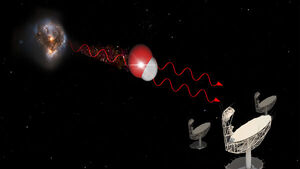
Researchers Discover Megamaser Five Billion Light Years from Earth
"An international team of researchers, including four Rutgers astronomers, has discovered a powerful megamaser -- a naturally occurring, astronomical, radio-wavelength laser -- in a galaxy nearly five billion light years from Earth. The furthest of its kind, the megamaser was detected by South Africa's "MeerKAT," a radio telescope consisting of 64 antennas. Megamasers produced by hydroxyl (OH) molecules are considered reliable tracers of gas-rich galaxy mergers, which are locations of intense star formation. An astronomical maser occurs when some components within a galaxy (like gas clouds) have the right physical conditions and the right alignment to radiate intense energy (in this case, microwaves). When two galaxies collide, their gas can become extremely dense, leading to the formation of large numbers of hydroxyl (OH) molecules made up of one oxygen atom and one hydrogen atom. These OH molecules can then produce a bright signal called a maser, which is similar to a laser but that emits radio waves rather than visible light." [...]
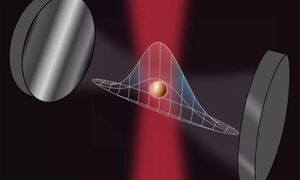
Microcavities as a sensor platform
"Sensors are a pillar of the Internet of Things, providing the data to control all sorts of objects. Here, precision is essential, and this is where quantum technologies could make a difference. Researchers in Innsbruck and Zurich are now demonstrating how nanoparticles in tiny optical resonators can be transferred into quantum regime and used as high-precision sensors. Advances in quantum physics offer new opportunities to significantly improve the precision of sensors and thus enable new technologies. A team led by Oriol Romero-Isart of the Institute of Quantum Optics and Quantum Information at the Austrian Academy of Sciences and the Department of Theoretical Physics at the University of Innsbruck and a team lead by Romain Quidant of ETH Zurich are now proposing a new concept for a high-precision quantum sensor. The researchers suggest that the motional fluctuations of a nanoparticle trapped in a microscopic optical resonator could be reduced significantly below the zero-point motion, by exploiting the fast unstable dynamics of the system." [...]

‘Robot scientist’ Eve finds that less than one third of scientific results are reproducible
"Researchers have used a combination of automated text analysis and the ‘robot scientist’ Eve to semi-automate the process of reproducing research results. The problem of lack of reproducibility is one of the biggest crises facing modern science. The researchers, led by the University of Cambridge, analysed more than 12,000 research papers on breast cancer cell biology. After narrowing the set down to 74 papers of high scientific interest, less than one-third – 22 papers – were found to be reproducible. In two cases, Eve was able to make serendipitous discoveries. The results, reported in the journal Royal Society Interface, demonstrate that it is possible to use robotics and artificial intelligence to help address the reproducibility crisis." [...]
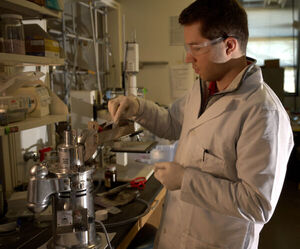
Treated plastic waste good at grabbing carbon dioxide
"Rice University lab turns hard-to-process trash into carbon-capture master Here’s another thing to do with that mountain of used plastic: make it soak up excess carbon dioxide. What seems like a win-win for a pair of pressing environmental problems describes a Rice University lab’s newly discovered chemical technique to turn waste plastic into an effective carbon dioxide (CO2) sorbent for industry. Rice chemist James Tour and co-lead authors Rice alumnus Wala Algozeeb, graduate student Paul Savas and postdoctoral researcher Zhe Yuan reported in the American Chemical Society journal ACS Nano that heating plastic waste in the presence of potassium acetate produced particles with nanometer-scale pores that trap carbon dioxide molecules. These particles can be used to remove CO2 from flue gas streams, they reported. “Point sources of CO2 emissions like power plant exhaust stacks can be fitted with this waste-plastic-derived material to remove enormous amounts of CO2 that would normally fill the atmosphere,” Tour said. “It is a great way to have one problem, plastic waste, address another problem, CO2 emissions.” A current process to pyrolyze plastic known as chemical recycling produces oils, gases and waxes, but the carbon byproduct is nearly useless, he said." [...]

An optimized solution for face recognition
"When artificial intelligence is tasked with visually identifying objects and faces, it assigns specific components of its network to face recognition — just like the human brain. The human brain seems to care a lot about faces. It’s dedicated a specific area to identifying them, and the neurons there are so good at their job that most of us can readily recognize thousands of individuals. With artificial intelligence, computers can now recognize faces with a similar efficiency — and neuroscientists at MIT’s McGovern Institute for Brain Research have found that a computational network trained to identify faces and other objects discovers a surprisingly brain-like strategy to sort them all out. The finding, reported March 16 in Science Advances, suggests that the millions of years of evolution that have shaped circuits in the human brain have optimized our system for facial recognition. “The human brain’s solution is to segregate the processing of faces from the processing of objects,” explains Katharina Dobs, who led the study as a postdoc in the lab of McGovern investigator Nancy Kanwisher, the Walter A. Rosenblith Professor of Cognitive Neuroscience at MIT." [...]
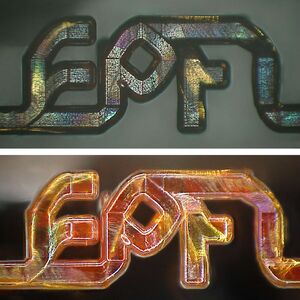
Researchers Develop Glass-in-Glass Fabrication Approach for Making Miniature IR Optics
"New technique can create complex 3D optics for infrared spectroscopy, sensing and more Researchers have developed a new fabrication process that allows infrared (IR) glass to be combined with another glass and formed into complex miniature shapes. The technique can be used to create complex infrared optics that could make IR imaging and sensing more broadly accessible. “Glass that transmits IR wavelengths is essential for many applications, including spectroscopy techniques used to identify various materials and substances,” said research team leader Yves Bellouard from Ecole Polytechnique Fédérale de Lausanne (EPFL) in Switzerland. “However, infrared glasses are difficult to manufacture, fragile and degrade easily in the presence of moisture.” In the Optica Publishing Group journal Optics Express, the researchers describe their new technique, which can be used to embed fragile IR glasses inside a durable silica matrix. The process can be used to create virtually any interconnected 3D shape with features measuring a micron or less. It works with a wide variety of glasses, offering a new way to fine-tune the properties of 3D optics with subtle combinations of glass." [...]

New Technique Offers Faster Security for Non-Volatile Memory Tech
"Researchers have developed a technique that leverages hardware and software to improve file system security for next-generation memory technologies called non-volatile memories (NVMs). The new encryption technique also permits faster performance than existing software security technologies. “NVMs are an emerging technology that allows rapid access to the data, and retains data even when a system crashes or loses power,” says Amro Awad, senior author of a paper on the work and an assistant professor of electrical and computer engineering at North Carolina State University. “However, the features that give NVMs these attractive characteristics also make it difficult to encrypt files on NVM devices – which raises security concerns. We’ve developed a way to secure files on NVM devices without sacrificing the speed that makes NVMs attractive.” “Our technique allows for file-level encryption in fast NVM memories, while cutting the related execution time significantly,” says Kazi Abu Zubair, first author of the paper and a Ph.D. student at NC State. Traditionally, computers use two types of data storage." [...]

A 3D approach to protecting biodiversity on the high seas
"A three-dimensional approach to marine conservation could help expand protected ocean areas by up to 30 per cent this decade, according to international researchers. Dr Issac Brito-Morales helped develop the strategy while at The University of Queensland and said it could help conservationists and governments assess the biodiversity of our oceans in unprecedented detail. “We need to stop thinking about the world as a two-dimensional map when it comes to conservation,” Dr Brito-Morales said. “Our approach allows us to observe the world’s oceans in their full three dimensions, observing depth zones and the seafloor as different layers of our complex marine system. “In the past, most marine protected areas were designated in shallow coastal areas – such as coral reefs – and considered the biodiversity in the water column and on the seafloor as one system. “This may work in shallow marine environments, but in the open ocean, the surface can be many kilometres away from the sea floor – they’re completely different ecosystems." [...]
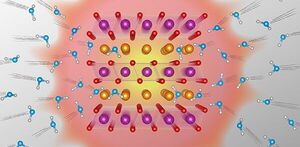
The Material that Could Save Industries Heat
"Scientists in Japan have found a common substance that can reversibly and rapidly store and release relatively large amounts of low-grade heat without decomposing. The research could lead to more efficient reuse of industrial waste heat. The results were published in the journal Nature Communications and were a collaboration between scientists at Tohoku University's Institute for Materials Research and Rigaku Corporation, a company that designs and manufactures X-ray-based measurement and thermal analysis tools. In their investigations, the researchers used a layered manganese oxide mineral containing potassium ions and crystal water. This mineral is quite similar in its composition to birnessite, which is commonly found on the Earth's surface. The team fabricated their compound in the form of an insoluble black powder and then examined its crystal structure using an X-ray diffractometer and a transmission electron microscope." [...]
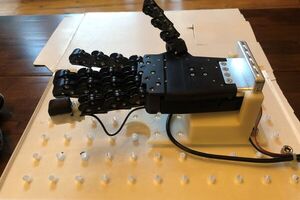
Touchy subject: 3D printed fingertip ‘feels’ like human skin
"A highly sensitive, 3D-printed fingertip could help robots become more dexterous and improve the performance of prosthetic hands by giving them an in-built sense of touch. Machines can beat the world’s best chess player, but they cannot handle a chess piece as well as an infant. This lack of robot dexterity is partly because artificial grippers lack the fine tactile sense of the human fingertip, which is used to guide our hands as we pick up and handle objects. Two papers published in the Journal of the Royal Society Interface give the first in-depth comparison of an artificial fingertip with neural recordings of the human sense of touch. The research was led by Professor of Robotics & AI (Artificial Intelligence), Nathan Lepora, from the University of Bristol’s Department of Engineering Maths and based at the Bristol Robotics Laboratory. “Our work helps uncover how the complex internal structure of human skin creates our human sense of touch." [...]
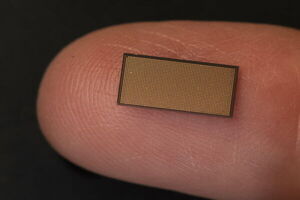
Honey holds potential for making brain-like computer chips
"Honey might be a sweet solution for developing environmentally friendly components for neuromorphic computers, systems designed to mimic the neurons and synapses found in the human brain. Hailed by some as the future of computing, neuromorphic systems are much faster and use much less power than traditional computers. Washington State University engineers have demonstrated one way to make them more organic too. In a study published in Journal of Physics D, the researchers show that honey can be used to make a memristor, a component similar to a transistor that can not only process but also store data in memory. “This is a very small device with a simple structure, but it has very similar functionalities to a human neuron,” said Feng Zhao, associate professor of WSU’s School of Engineering and Computer Science and corresponding author on the study.“ This means if we can integrate millions or billions of these honey memristors together, then they can be made into a neuromorphic system that functions much like a human brain.” For the study, Zhao and first author Brandon Sueoka, a WSU graduate student in Zhao’s lab, created memristors by processing honey into a solid form and sandwiching it between two metal electrodes, making a structure similar to a human synapse. They then tested the honey memristors’ ability to mimic the work of synapses with high switching on and off speeds of 100 and 500 nanoseconds respectively." [...]
Projetos Maker
Diversos Projetos interessantes.

Printing to a Serial LED Display
"This article describes a simple routine to allow you to use a low-cost eight-digit LED module to display formatted data from a microcontroller project The routine will work with almost any microcontroller; as a demonstration of the routine I've written a simple stopwatch program for the ATtiny85 or ATtiny402. Introduction Seven-segment LED displays are a great way to provide clear, readable output from a project such as a digital clock, voltmeter, or frequency meter. They are also useful for providing debugging information when developing a project. The only downside is that there are a lot of pins to wire up, but you can avoid this by using a serial seven-segment display module that you connect to with a simple I2C or SPI interface. " [...]
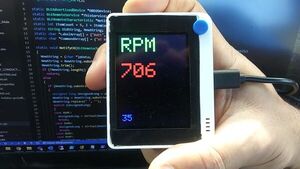
Reading OBD2 With Wio Terminal
"Hold on to your car just a little bit longer. According to the research firm IHS Markit, "The average age of light vehicles in operation (VIO) in the U.S. has risen to 12.1 years this year, increasing by nearly 2 months during 2020". If you're following my projects, you'd know that I drive an older truck (probably the one that skewed the curve). Have you seen car prices lately? Now more than ever, I must keep this truck running. I need to be ready for my check engine light to come on." [...]
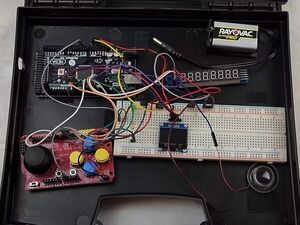
Portable PONG Game
"A Portable PONG Game. This project is a Portable PONG Game made for my capstone course. It has a main menu, multiplayer, lights and sounds! It uses one controller to control two players. " [...]

Reverse-engineering a mysterious Univac computer board
"The IBM 1401 team at the Computer History Museum accumulates a lot of mystery components from donations and other sources. While going through a box, we came across the unusual circuit board below. At first, it looked like an IBM SMS (Standard Modular System) card, the building block of IBM's computers of the late 1950s and early 1960s.1 However, this board is larger, has double-sided wiring, the connector is different, and the labeling is different. I asked around about the board and Robert Garner identified it as from the Univac 1004, a plugboard-controlled data processing system from 1963.4 The Univac 1004 was marketed as a "Card Processor" rather than a computer,3 designed for business applications that read punch cards and producing output, but still required calculation and logical decisions. Typical applications were payroll, inventory, billing, or accounting. The most unusual feature of the Univac 1004 was that it was programmed by a plugboard (below) instead of a stored program." [...]
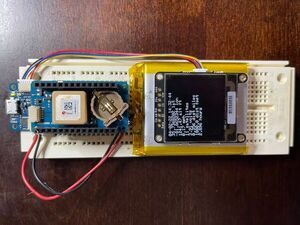
GPS with display
"Arduino MKR WiFi 1010 with MKR GPS shield and Adafruit SSD1327 display This project combines the Arduino MKR WiFi 1010, Arduino MKR GPS and Adafruit SSD1327 display to show once per second: date/time, GPS latitude, GPS longitude, GPS altitude in feet, GPS ground speed in mph, number of GPS satellites received, external battery voltage, distance traveled in miles, distance traveled in feet and elapsed duration in hours. The original idea was to explore the capabilities of the MKR GPS as a shield for my existing MKR WiFi 1010 boards. In the process of experimenting I needed a portable, battery-operated, small, high resolution display that would provide enough size and pixels to display all of the GPS and calculated data without scrolling using the I2C port. The MKR GPS is mounted as a shield on the MKR WiFi 1010 and nothing could be mounted above it without blocking the GPS signal. The hardware had to draw as little current as possible for maximum battery life. For a battery I used the Adafruit 3.7 volt, 2500 mAh Lithium Ion Polymer Battery." [...]
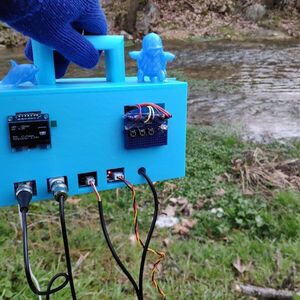
GSM & SMS Enabled Water Pollution Monitor
"Via MKR GSM 1400, collate water quality data from resources over GPRS to train a Neuton model, run the model, and transmit results via SMS. In this project, I focused on developing an AI-driven budget-friendly device to collect water quality data from various water resources in the field and forecast water pollution levels based on oxidation-reduction potential (ORP), pH, total dissolved solids (TDS), and turbidity measurements. Why is water pollution a global issue? Since we incessantly pollute our limited water resources, which are already drowning in chemicals, waste, plastic, and other contaminants, it is crucial to eschew water pollution before it is too late for relieving the plight of people lacking safe drinking water. Although there are international efforts and campaigns to plummet water contaminants, it is yet a pressing issue to track water pollution levels locally to get prescient warnings regarding possible health and environmental risks. In addition to threatening terrestrial animals, plants, and marine life, water pollution is jeopardizing our health." [...]
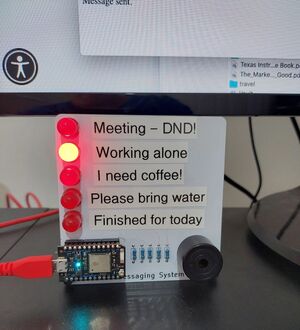
Build a simple WFH Messaging System
"Working from home – either you enjoy it, or doing so has been thrust upon you. As a world-class introvert I’ve always enjoyed being self-employed and working from my own office. However others do not, as they have missed out on the activity and interacting with other people in their workplace. I was recently asked by an associate to make up a simple messaging system, that would allow them to indicate their work status and also request a coffee or whatnot from their husband, which has resulted in the simple messaging system described in this article – which you can build too. Being somewhat lazy/efficient I needed a simple WiFi-based solution that allowed for simple control of some digital output pins from a web page. A bit of research resulted with the Particle Photon, a compact WiFi-enabled microcontroller that includes all the Internet-connectivity without any hard work or recurring payments." [...]
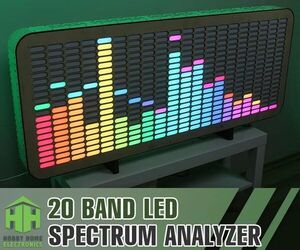
20 Band LED Spectrum Analyzer
"Good afternoon, dear viewers and readers! In todays article Ill show you a complete assembly manual for 20-band LED spectrum analyzer based on STM32 microcontroller and WS2812B addressable LEDs. Radio parts store: - Microchip STM32F407VET6 - Microchip MAX9814 - Microphone amplifier MAX9814 - Microchip LM358 - Linear voltage regulator LM1117 3,3V - Infrared sensor TSOP38238 - Addressable LED,s WS2812 - Black flexible PCB for WS2812B - White flexible PCB for WS2812B - Piezo BUZZER - Electret microphone - Tactile Switches - Vertical audio input 3,5mm - Connectors KF2510 - Power input 220V - Power cable 220 V - Power supply 5 V 80 А - Remote control - Programmer ST-LINK/V2 - Cable ties - Wires with a cross section of 2.5 mm - 3 pin wire - Set of connectors for electrical wires - Ring lugs for electrical wires - Heat shrink tubing for wires - Nylon braid for wires - Plastic mounting posts M/M - Plastic mounting posts M/F - Brass mounting posts - Round head screws M3 - Nutts M3 - Soldering Station NEWACALOX 8786D - Wire stripper - Crimper for crimping terminals on wires - Wire cutters - Screwdriwer set" [...]
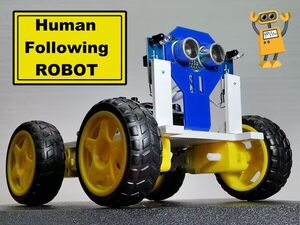
DIY Arduino Human Following Robot
"This Robot uses a combination of Ultrasonic and infrared sensors to track an object. There are several technologies that can detect and maintain a certain distance between a Robot and a Human. The most commonly used are ultrasonic sensors, infrared sensors, laser range sensor, voice and face recognition camera sensors etc.. This time I will introduce you to the Arduino Robot, which uses a combination of Ultrasonic and infrared sensors to track an object. The device is really very simple to build and very effective, so it has been presented several times on the Internet. Most often in these presentations a servo motor is used which moves the ultrasonic sensor." [...]
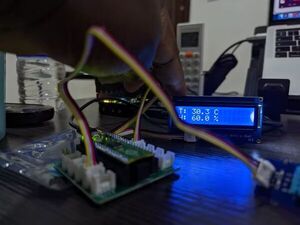
Temperature Reading with RPi Pico & MicroPython
"New to embedded programming? Use MicroPython to read and display temperature and humidity on an LCD. No soldering or breadboard is needed. Is the room uncomfortable because of the temperature or the humidity? Introduction This project will show you how to program a microcontroller to get temperature and humidity readings and display those on an LCD. You will utilize the Raspberry Pi Pico for this." [...]
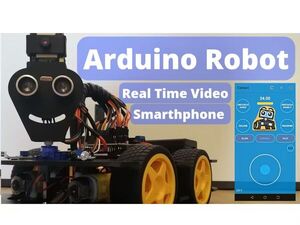
Arduino ESP32 All in One Robot
"Arduino ESP32 All in One Robot (Obstacle Avoiding, Line Tracking, Following, Real Time Video) Hi, after several night spent to do robots I decided to share with you my last job. An Arduino/ESP32 based robot that is able to avoid obstacle, track lines, follow and show real-time video from a camera. This robot cab be controlled through Bluetooth (connected to Arduino) or WIFI (ESP32 board connected to Arduino). I hope to do a step by step guide on making this robot in a very easy way. An obstacle avoiding robot is a fully autonomous robot which can be able to avoid any obstacle which it faces when it moves. Simply, when it met an obstacle while it’s moving forward, automatically stop moving forward and makes a step back." [...]
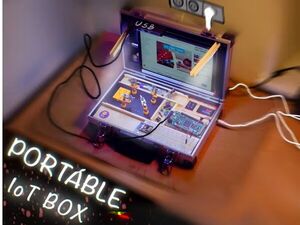
IoT Box - Take Your Workstation Everywhere!
"I created a portable prototyping kit! For less than a year, I have been studying IoT at a university located half a thousand kilometers from my home, or rather from my parents' home. From the moment I moved to the dormitory, my life is constantly traveling: in the morning I travel to school, after school to bed. Sometimes I also come home to get the jars. Before I left for college, I had my workstation in my room, but after leaving, I found it needed to be mobile so I could use it anywhere. At first, I thought I'd make a sketch of my idea for this device, but my artistic skills quickly knocked the idea out of my head." [...]
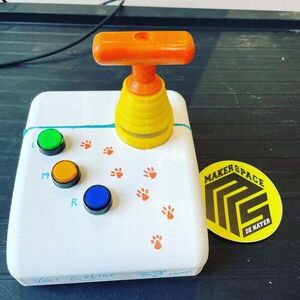
Mouse for People With Brain or Nervous Disability
"Joystick that behaves as a mouse for people who experience tremor when using a regular mouse. I designed this one for a 6 year old girl with Ataxiatelangiectasia Supplies - Arduino pro micro without headers - MPU-6050 Accelerometer and Gyroscope 3-Axis Module 3.3V-5V - 3 non latching buttons type AB6Y-M-(colour) - several different colours of thin insulated stranded wire - a micro USB data cable - a tap M4 - a tap M6 - a sockethead screw M6x30 - two sockethead screws M5x40 - two nuts M5 - two setscrews M4 with a flat point and internal hexagon - one strong printbed spring about 30mm long OD 8mm - hot glue gun - 3D printed files found on printables.com" [...]
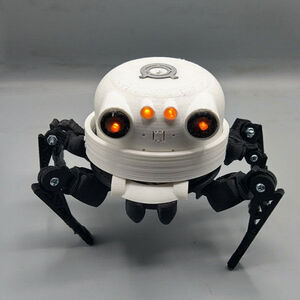
Asi, a 3D Printed Wearable Robot Friend
"Asi, short for Anansi, from the African folklore tale, is a wearable robot that can be worn on your head. I designed Asi to be lightweight and with the ball joint legs strong enough to hold on to your head. " [...]

O-Clock
"This clock uses side glow fiber optics to tell the time in a colorful way. Red/Green/Blue = Hour/Minute/Second. The light comes frn an LED strip that makes the fiber glow. But it also emits light at the ends and projects it on the wall. A light sensor senses the ambient light in the room and automatically adjusts the intensity of the LEDs. The light sensor also doubles as a button where you can select which animation you want to use to display the time." [...]

PiGlass v2
"PiGlass v2 is a remake of an older project on the Adafruit Learning System. I made v1 back in 2018 and ran into a lot of performance issues, so I couldn't make it do everything I wanted it to. When I heard that the Pi Zero 2 was coming out, I knew I had to try this again. My experience with v1 greatly assisted me in the process of making v2. I redesigned it completely and created new software. The Pi is now located on the back strap of a hat." [...]
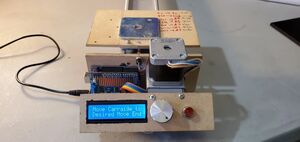
Tobogan Mini Camera Slider
"From Cricut to Camera Slider! A killed-by-the-manufacturer Cricut Expression parted out and upcycled into a 12" camera slider made using only what I had on hand! No 3d printed parts. No buying anything new. Just bits and bobs from my various parts bins and some scrap MDF. "Tobogan" speeled wrong on purpose to fit in the LCD." [...]
Secção Videos
Videos interessantes.

LINKAGES & MECHANISMS -The Secret Life of Components, a series of guides for makers and designers 10
That's all Folks!





